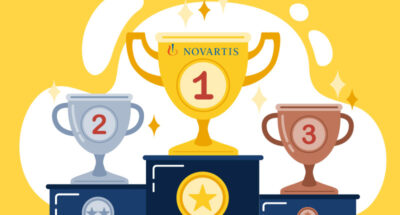
Thriving after 45: is the best still to come?
Neuroscience shows that business-critical cognitive skills can peak after middle-age, but only if we prioritize brain health. ...

by Tania Lennon Published December 27, 2023 in 2024 trends • 8 min read
 What will 2024 bring for you and your business? IMD faculty and other experts offer their predictions for the year ahead.
What will 2024 bring for you and your business? IMD faculty and other experts offer their predictions for the year ahead.
Our relationship with work – our own expectations and those of the people we hire – is still changing, and so is the nature of that work itself.
COVID-19 permanently changed the psychological contract between employer and employee, with dramatically enhanced expectations of flexibility in work practices. Combine that with increasing expectations for personalization in services and experiences imported from the consumer world and you have a potent combination that shifted the balance of power in the workplace in five main ways.
Job crafting is a key manifestation of this shift. Job crafting is a person-centered approach to shaping jobs, where the employee can mold the role to fit their specific strengths and the unique demands of the context in which they are operating. This offers three advantages.
Firstly, it is often a more effective way of tapping into the unique talents of each individual, enabling them to harness their strengths to create value for the organization. The corresponding increase in person-role fit generates a range of benefits, including enhanced engagement, job satisfaction, and retention. Secondly, it provides a more robust platform for high performance. Performance has long been recognized as a function of the interaction of the person and situation. By giving license to employees to adapt the job to address the specific demands of the job context – market trends, customer needs, economic conditions, regulatory requirements, etc. – there is greater scope for performance uplift. Finally, job crafting is an ideal vehicle for harnessing a diversity of perspectives because it allows role incumbents to perceive job demands in different ways, rather than through an imposed standardized lens. These divergent perspectives can yield innovative ideas, especially when lessons and insights can be shared across employees.
Takeaway: Job crafting offers a mechanism for providing greater autonomy, flexibility, and personalization while harnessing talent and diverse perspectives to address heterogeneous role contexts, resulting in increased performance.
Lynda Gratton introduced the idea of the multistage career in 2017. In a dynamic and rapidly changing world, the ability to leverage one or two primary sources of formal education to succeed in a single discipline across a lifetime is becoming less likely. Instead, a multistage life model sees individuals moving through multiple cycles of education, exploration, and employment. Employment may incorporate a wide range of forms, including self-employment, employment in an organization, becoming part of a collective, contracting, or time spent in academia. These multiple transitions enrich the individual, providing a breadth of experiences that fuel the development of ambidexterity, which in turn drives potential. It also enables individuals to establish bridging ties across broad networks, which is an antecedent to innovation.
Yet many organizations cling to outdated assumptions about patterns of education and employment that are likely to signal success. Further, these same assumptions can become encoded into machine learning algorithms used to screen CVs. Consequently, organizations may be ‘screening out’ the very talent that can bring the capabilities needed to support companies to be ‘future-ready.’
Takeaway: Organizations need to refresh their screening processes to take account of the risk of multistage careers, where individuals move between employment, education, experiences, and exploration through multiple cycles. Multistage life frameworks offer an enriching pathway that is better suited to the development of capabilities for a dynamic and fast-moving environment.

“Accelerated adaptation captures the processes that facilitate enhanced learning from experiences and education, fueling the individual’s ability to adapt.”
The capacity of organizations to harness, reshape, and deploy their knowledge and capabilities to address emerging and anticipated market opportunities has long been recognized as a driver of firm performance. The notion, first posited by authors Burns and Stalker in 1961, has remained a potent predictor of sustained success, underpinning qualities such as customer centricity, innovation, and the existence of an organizational learning culture.
IMD’s research suggests there are three key qualities leaders can cultivate to build dynamic capabilities at an organizational level. Firstly, absorptive capacity – the processes and systems that firms use to ‘acquire, assimilate, transform and exploit’ knowledge (Zahra and George, 2002). Secondly, ambidexterity – the leader’s ability to address concurrent and opposing business demands to drive performance today while laying the foundations for new sources of value tomorrow (Piskorski and Roi, 2017).
The engine underpinning both absorptive capacity and ambidexterity is the third ingredient leaders can cultivate to foster dynamic capabilities: accelerated adaptation. Accelerated adaptation captures the processes that facilitate enhanced learning from experiences and education, fueling the individual’s ability to adapt. It comprises abilities such as accurate perception of situations, known as acuity, and the ability to test assumptions and embrace alternative perspectives.
While these qualities have long been recognized as important for leadership and organizational performance, they have never been more necessary. The pace of change, disruption driven by factors such as technological advancement, climate change and social upheaval, the logarithmic proliferation of complexity and information overload – all of these mean the ability of leaders and organizations to move fluidly and quickly into spaces of unmet need and innovation opportunity will be an even more vital capability to create competitive advantage and sustained success.
Takeaway: Dynamic capabilities will become an even stronger determinant of organizational success as rates of change and complexity continue to increase.
Defining and measuring performance has always been fraught with difficulty. Vast amounts of effort are expended annually by companies seeking a way to quantify and compare across individuals, typically to support administrative decisions such as bonuses, promotions, or salaries, yet an increasing body of research suggests that the net effect of this effort is negative. For example, Deloitte estimated that the completion of their annual performance cycle consumed some two million hours with little positive benefit, startling statistics that led them to scrap the system in 2015 to be replaced by more frequent and future-focused check-ins.
Further, the task of defining and measuring performance is becoming more difficult. As businesses become more connected and collaborative to address complex and multi-faceted customer needs and business opportunities, disentangling individual contributions from team success is both near impossible and risks diminishing performance. Traditional goal-based performance systems may not be able to keep up with the rapid changes in the environment. The dynamic and heterogeneous environment for roles also contradicts the idea that performance can be tightly and consistently defined across time and job contexts.
Yet individuals crave information and recognition to let them know how they are doing and to provide intrinsic motivation to sustain their effort. Leaders must engage in regular dialogue with team members to reinforce the value they are creating and to provide support for individuals to grow, stretch, and adapt.

It is when these interactions need to be systematized, evaluated, and compared that problems arise. The very individuality that companies seek to harness to drive performance and innovation is eliminated, resulting in regression to the mean. Attention becomes directed at fulfilling the defined criteria or framework – all internal processes – rather than addressing the opportunities and threats driven by the external environment where value is created.
The systems of appraising performance typically deployed in performance management are not known for their accuracy. Objective performance measures, for example, revenue or productivity, have an average correlation with subjective ratings of between 0.3 and 0.4, reflecting the disparate nature of performance as a construct. Subjective ratings can be prone to biases, such as recency and homophily (the ‘like me’ bias), yet they also provide a vehicle that can take account of the complexity of the context in which individuals are working.
Takeaway: 2024 may be the year when organizational disquiet about outdated and potentially value-destroying performance management processes reaches a zenith. Other core assumptions about the world of work have been felled in the wake of social and technological change: it is now time for a rethink in the definition and management of performance so that it better aligns with the complex, connected world in which we operate.
The winds of change are already circling talent management processes in organizations. The disconnect between the inclusivity and personalization embedded through DEI and personalization of the employee experience and the exclusivity propagated by traditional succession management systems that focus on the 5-10% of the employee population identified as ‘talent’ is becoming increasingly intolerable for many organizations.
These succession planning processes have not succeeded in providing a rich source of capabilities to support organizations in executing their strategy, with 80% of CEOs concerned that they do not have the talent they need to deliver their vision. Despite diligent succession planning over the past 25 years since the publication of the ‘War for Talent’ in 1997, developing the bench strength required for sustained success seems further still away.
Part of the problem is the linearity and rigidity inherent in many talent management processes. Succession planning takes techniques developed for the assessment of job fit, where the role requirements and the individual are both evaluated at the same moment, and applies it to succession planning. However, these selection-oriented processes are not effective when addressing future role demands. Firstly, the role is likely to change significantly over time, or perhaps disappear altogether to be replaced by a different role. Secondly, the individual will grow, change, and develop over time. Unlike the correlation between two measurable and known factors (person and job) at a given point in time, predicting the relationship between two dynamic variables at an unknown point in the future is the statistical equivalent of nailing down jelly.
Organizations are seeking more dynamic and adaptive models of talent that embrace and anticipate change. The models target the antecedents of leader development and growth, with a focus on enhancing leaders’ ability to harvest and harness learning and insights from their experiences to address new, emerging, and as yet unknown role demands – in other words, to enable accelerated adaptation. This approach is also inherently inclusive, with diversity in capability being a potential driver of competitive advantage.
Takeaway: Talent management is being transformed by new, complex, and dynamic approaches that align with the complex and dynamic nature of business and leadership and their corresponding capability needs.

Executive Director of the Strategic Talent Development initiative
Tania Lennon leads the Strategic Talent team for IMD. She is an expert on future-ready talent development, including innovative assessment methods to maximize the impact of talent development on individual and organizational performance. Lennon is a “pracademic”, blending a strong research orientation with evidence-based practice in talent development and assessment.

July 2, 2025 • by Michael Netzley in Talent management
Neuroscience shows that business-critical cognitive skills can peak after middle-age, but only if we prioritize brain health. ...

June 17, 2025 in Talent management
How do organizations recruit and retain staff amid a fierce global battle for the best people? Novartis’s Rob Kowalski explains how organizational culture can provide the winning edge in a competitive talent...

May 30, 2025 in Talent management
Natalia Wallenberg of Ahold Delhaize describes how one of the largest retailers in Europe is tackling the upskilling dilemma....

May 21, 2025 • by Richard Roi, Luca Condosta in Talent management
Non-linear career paths will give your future leaders the range to drive both performance and transformation, say Ric Roi and ABB’s Luca Condosta. Individuals must actively pursue diverse experiences, while organizations need...
Explore first person business intelligence from top minds curated for a global executive audience